When you think of fish, you probably think of brightly striped fish in the coral reefs, or even what you eat. Certainly you don't picture this:
Here is another picture of a deep-sea monster:
Yes, it exists and it is not computer-edited. The angler fish, along with the fangtooth, live close to the very bottom of the ocean, in the particular region called the Twilight Zone. Here it is completely dark and inhospitable. You are probably wondering, how do these organisms find food? They use bioluminescence--- the way of making light that glows in the dark! An angler fish uses the pole sticking out of its head as a lure. It will flash bioluminescent light. Since other, prey organisms think of a light as possible food, and will be attracted to it. As you can see from the menacing set of teeth, the organism wil be in for a nasty surprise. How do organisms mate in the dark? That's not really known. Perhaps it's just luck! Here are some eccentric-looking organisms from the very bottom of the ocean:
As you can see, this organism, known as a copipod produces bioluminescence. Copipods are much smaller in actual size, and eat the few particles of plankton that drift down from higher waters. This plankton falls down, creating an effect that looks like snow, hence the name marine snow. Here is something that preys on copipods:
This is indeed alive! It is hard to believe(when I first saw it I thought it was from a science fiction movie!). This odd organism is called gigantocypris, and preys on copipods. Therefore, it is approximately the same size(the size of a pea). Gigantocypris seeks out the bioluminescent flashes of copipods. Then, it must rely on mainly luck, and a tiny bit of its senses. However, it can be fooled. Just look at this:
This shrimp has been frightened by something, and is squirting bioluminescent glue to keep it away! This tactic is similar to that of the octopus's ink.
This is a comb jellyfish, and another glue-producing organism. When threatened, it will shoot out a sticky net of glue. Here in the picture, the comb jelly is just going about its business without being eaten---so far.
This is actual size! What is this beautiful scarf? It is a siphonophore! All these fancy bulbs and billows are filtering machines that filter out prey. After prey is trapped, it is zapped with poisons from the siphonophore's stinging cells. All it has to do is sit and wait! For additional help in catching prey, red light is invisible to the eyes of almost all deep sea life forms. Therefore, no one would even know it is there, so how can it be avoided?
This peculiar organism is known as phronima, a type of amphipod. Some species of it live in the bodies of jellyfish it paralyzed itself. Phronima is a fierce predator, and will take whatever crosses its path.
Half of this eel's head is its mouth! This gulper eel can tackle something twice its size with such a huge mouthful. What you saw in the picture is way less than even half of the eel's body. It has a long tail that can extend to a few meters long! You can't afford to be picky of you live in the deep sea!
Does this remind you of an octopus 'dressed up' as an elephant for Halloween? This dumbo octopus has been only recently discovered, and those flaps may or may not be ears.
This is a firefly squid.
These are tube worms--- found only at the very bottom of the ocean!
This is a type of sea urchin that dwells at the very bottom of the ocean!
Polychaete Worm
Another Polychaete Worm
This hatchetfish has quite a dazzling display to stun predators that try to catch it! It will flash these silver scales. However, what if it is attacked from the bottom? There is a defense for that, too! Hatchetfish possess photophores, color changing cells that detect the very faint beans of sunlight that pierce the Twilight Zone. This helps them camouflage with the exact color of the water.
Hagfish
This snake-like fish lives at the very bottom of the ocean, and feeds on whatever dead meat floats to the floor.
Underwater Storms
These hydrothermal vents, or black smokers, spew out boiling liquid carbon dioxide. It's that hot! However, some organisms still live here, even with no oxygen! Anaerobic bacteria dwell here, along with tube worms and some very tolerant species of crab(shown below)
Vent Crabs



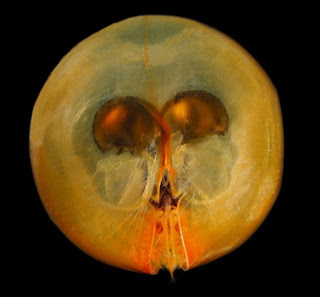


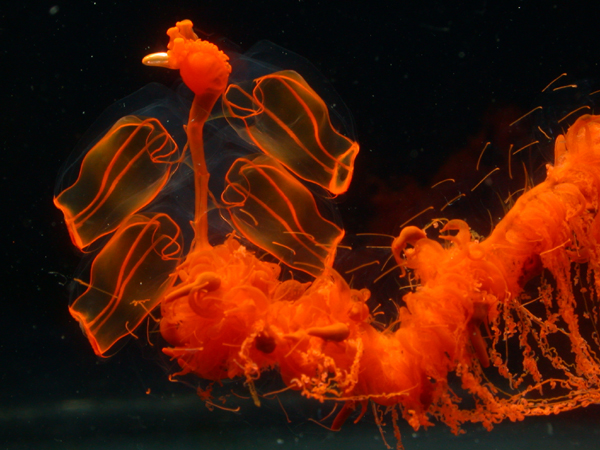




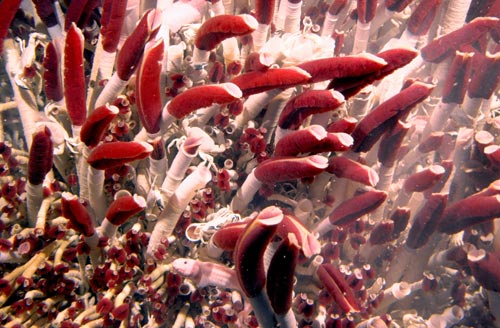


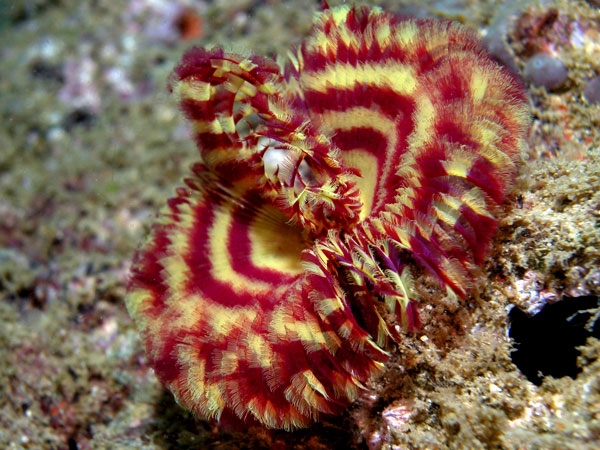
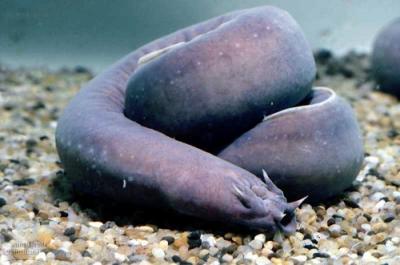
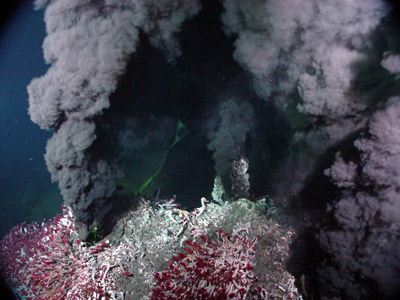
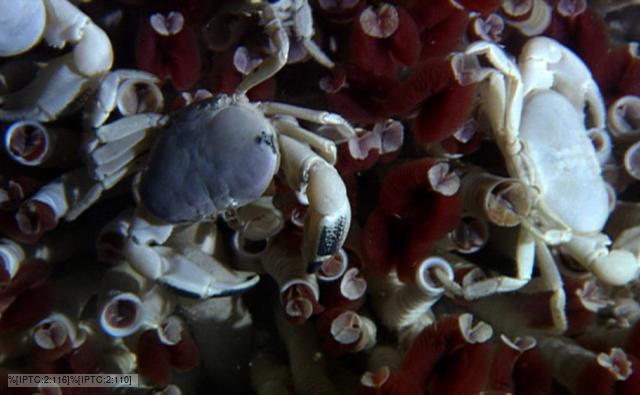
No comments:
Post a Comment